I have a distinctive memory of these ruins which I came across as you do, by complete accident whilst heading from Dublin to Meath in search of another potential ruin. As it happens the reason this site stuck in my head was not for any distinctive features it might have possessed, after all ruined churches like this are a dime a dozen and can be found scattered across the country. But the niggling pain I was experiencing between my shoulder blades, which got progressively worse as the day went on. Driving became very uncomfortable and using the camera was no easy task. I put this down to a strained muscle and continued on my journey. I actually managed to visit six out of the seven sites I had planned for the day, before I had to call it a day and head home, so with the inclusion of Garristown I still had my seven sites in the bag. As it turned out a trip to the Doctor’s the following morning revealed that I had been suffering the effects of a dose of Pleurisy!
Garristown itself is a small rural village in north Dublin, but could easily be mistaken for a quite countryside village. It was only when passing through a crossroads that I caught a glimpse of the towering ruin perched atop a hill to the North-West of the Village. There are some fantastic views to be seen from here which range from the Mourne Mountains in the North, to the equally stunning Wicklow Mountains in the South. Nearby there is a hill fort with the remains of what looks like an old windmill on top. This is known as Rath Esa after a Celtic Princess whom made the hill her home. At this time three of the most important places in Ireland would have been visible from here, namely, the Hill of Tara, Brú Na Bóinne and Howth Head. As Garristown was not part of my plans for the day I did not stop to check out the hill fort and wind mill but I shall return at a later date to explore this further.
The current church ruin which only dates back to 1888, rests within a walled graveyard on an elevated platform and to be honest is quite stunning in appearance even from the roadside. Along with its adjoining tower to the south, it occupies the site of a much earlier medieval R.C. church which is believed to have fallen into ruin in 1630. To the south east of the church there is a large slop-stone which I would think came from the original medieval church. The roof which has long since gone would have been double pitched, with a castellated parapet and obelisk on each corner of the tower. This is a good example of the Romanesque revival architecture of the period; whilst many of the pointed arch windows in the tower have been bricked up there are three fine specimens of the Romanesque style windows in the west wall and one in the north compete with limestone voussoirs. Whilst there is no door into the church it is still possible to gain entry via an open doorway in the west wall of the tower. The oldest grave slabs appear in the South of the graveyard where there is a line of grave slabs with no inscriptions facing West. Those with inscriptions seem to date from the early 18th to the 21st century. The graveyard would appear to be still in use today.
In ancient times the area was known locally as Ballyogari, even up to the late medieval period. There are accounts which can be found in both the Cath Gabhra which can be found in the Trinity College Library in Dublin and the Book of Howth. Both accounts tell the tale of the Battle of Gabhair from the Fenian Cycle of Celtic mythology. To cut a long story short in involved a massive battle between the Fianna and Cairbre, whom was the high King of Ireland and the son of Cormac Mac Airt. The story ends with both the destruction of the Fianna and the death of Cairbre from his wounds. It is claimed that the only survivors of the Fianna are Oisín and Caílte mac Rónáin, who live long enough to recount their tale to Saint Patrick. Gabhra is generally considered identical to the modern Garristown. During the Battle, warriors would shout the battle cry ‘Ballygarra’, and the name stuck to the area for many centuries later.
For more of my images, why not visit my Website,or follow me on Facebook, Instagram or Twitter.



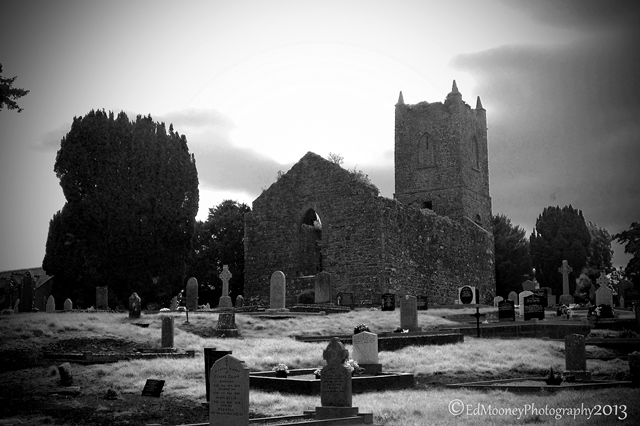

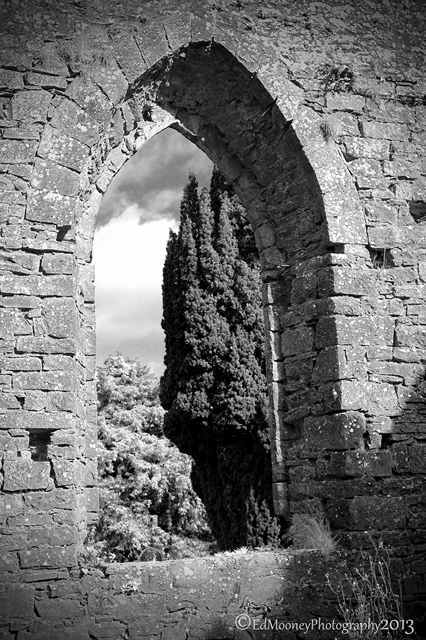
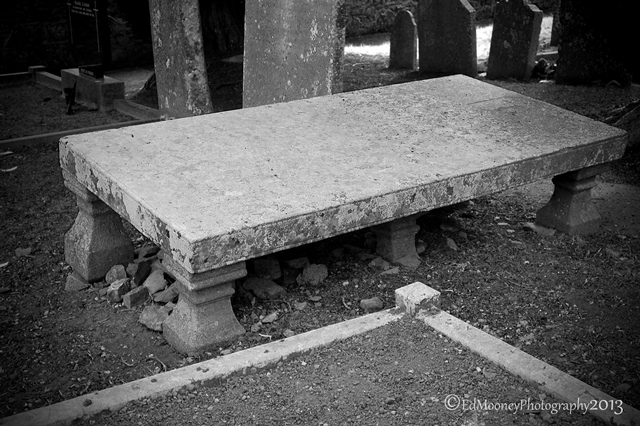

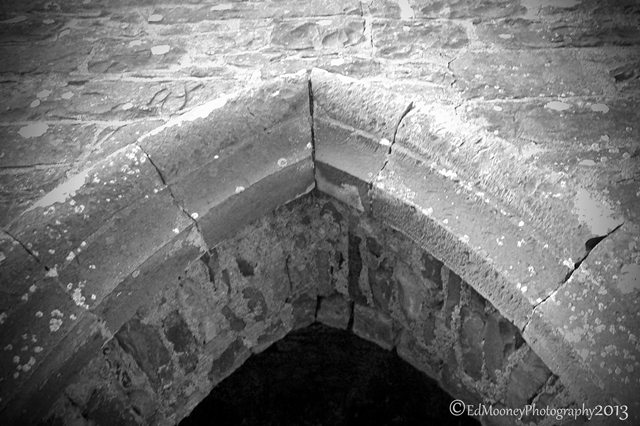

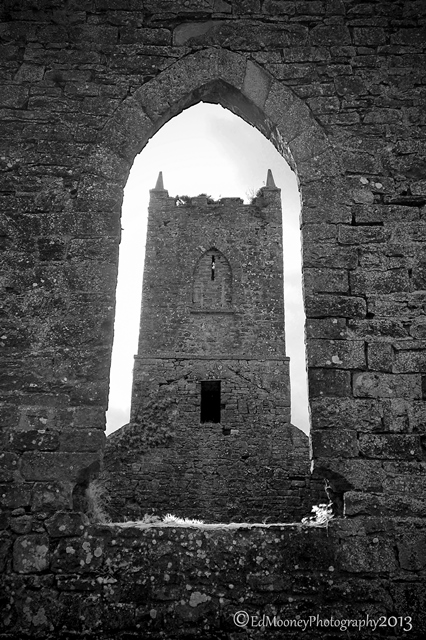
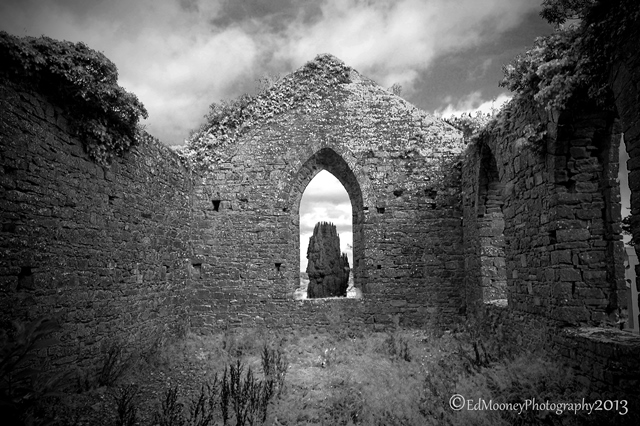





High on my list of specials is the topic stone buildings. Very well photographed, thanks for sharing.
LikeLike
Love the shot of the tower through the window.
LikeLike
what a powerful place this must have been – i love the views through the arches ) beth – isn’t it funny how we can manage to put off and tolerate a bit of discomfort (sorry yours was much more serious), all in the name of not missing an amazing adventure?
LikeLike
Thank you, some places just seem to be so easy to shoot, luckily on the day the shots seemed to frame themselves. I would have probably kept going on the day if it had not been for pains. but I guess everything happens for a reason, 🙂
LikeLike
Great series of shots here… You have some incredible framing using the architecture of the place, really cool.
LikeLike
Thank you, glad you liked them 🙂
LikeLike
Wonderful photos! The b/w is perfect for this scenery.
Hilde
LikeLike
Thanks Hilde, 🙂
LikeLike
Hi Ed, I love the mood that you set with these pictures. The black and white images give a real sense of the history of the location. Great work 🙂
Best wishes
Charlotte
LikeLike
Ed perhaps it’s the nurse in me….but what strikes me from your story is your dedication to your work. Here we are seeing all of these fabulous shots taken while you were so sick. Pleurisy ….yikes! Thank you for taking us here in spite of it all.
LikeLike
My pleasure, it actually turned out to be a productive day despite the discomfort 🙂
LikeLike
Reblogged this on Avial Blog and commented:
Garristown is a village in the rural part of Fingal, in the north western corner of the former County Dublin, Ireland. It is located in hilly country, sloping down from west to east, with views towards the hills around the Naul
LikeLike
Superb
I hope you are feeling better now!
LikeLike
All better thanks, nothing a handfull of pills cant fix, 🙂
LikeLike
Great photos and history, Ed. I sincerely hope you are better now! That can’t have been nice at all.
LikeLike
Ah yeah Im grand thanks Jo, 🙂
LikeLike
There is nothing quite like the texture of ancient stonework in black and white photography…you have captured the mood of the place perfectly, as always. Actually, this post feels very relevant for me, as Fionn mac Cumhall and the Fianna feature in the book I am currently writing (as I think you know), so thank you very much for sharing it. BTW, have you ever been to Sheemore and Sheebeg?
LikeLike
I have but it was a few years back, as memory serves me Sheemore has a rath and there was a passage tomb on Sheebeg, both are considered sacred sites by the Celts.
LikeLike
Got any pics?
LikeLike
Unfortunately not. It was a few years before i got into photography. Maybe next year I might get back over there, 🙂
LikeLike
I love the rich texture and atmospheric melancholy you’ve captured!
LikeLike
Thank you, so glad that you like them, 🙂
LikeLike
Sky is the roof for me
I walk through the arch way
Can you feel the how serene
How touching the bench under greens
deserted it may look, yet it got a history to tell
The tree that looks through arch, does cast eerie spell
LikeLike
🙂
LikeLike
I’m always drawn to your images of the scene through an archway. Hope you are feeling better!
LikeLike
Love the black and white imagery. Very striking.
LikeLike
Why Thank You, 🙂
LikeLike
This is just lovely. The shadows and sun lend such a depth to these photographs. Your account and history write up is very interesting. Love! Love!
LikeLike
Delighted that you liked them, Thank you, 🙂
LikeLike